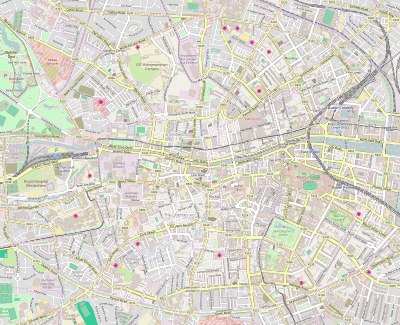Project Arts Centre
|
| |
 Project Arts Centre | |
| Address |
39 East Essex Street, Temple Bar Dublin Ireland |
|---|---|
| Coordinates | 53°20′42″N 6°15′58″W / 53.345°N 6.26624°W |
| Owner |
Auditorium 200 seats Cube 80 seats |
| Type | Theatre and gallery |
| Construction | |
| Opened | 1967 |
| Rebuilt | 2000 |
| Years active | 1966 to present |
| Architect | Shay Cleary Architects |
| Website | |
|
www | |
Project Arts Centre is a multidisciplinary arts centre based in Temple Bar, Dublin, which hosts theatre, dance, music and performance.[1][2]
History
Project Arts Centre was founded by Jim FitzGerald and Colm O'Briain in 1967 after a three-week festival at the Gate Theatre in 1966. Project Arts Centre was the first such arts centre in Ireland.[3] The Centre had several homes before it opened for business in a converted factory on East Essex Street in 1975,[1] after numerous issues regarding funding.[4] This building was demolished in 1998 and a new purpose-built space containing two auditoriums, a gallery and a bar opened on the same site in 2000,[5] as part of the second phase of the regeneration of Temple Bar.[6] The presence of the Centre, along with a number of other cultural institutions in Temple Bar such as Irish Film Institute, the Temple Bar Gallery and Studios, Black Church Print Studios, the Gallery of Photography, and Temple Bar Music Centre (now the Button Factory), inspired the regeneration of the area as a cultural quarter.[7][8][9]
The Centre
The centre has been a venue for many of the city's performing arts festivals including Dublin Dance Festival, Dublin Writers Festival, Dublin Fringe Festival and Dublin Theatre Festival. Since the Irish recession there has been an emphasis on cross cultural productions.[10]
References
- 1 2 e-flux. "Project Arts Centre". e-flux. Retrieved 17 February 2015.
- ↑ Playography Ireland. "PROJECT ARTS CENTRE". Playography Ireland. Retrieved 17 February 2015.
- ↑ Benson, Ciarán (1992). "Towards a Cultural Democracy". Studies: An Irish Quarterly Review. 81 (321). Retrieved 18 February 2015.
- ↑ Sheridan, Peter (1977). "The Theatre and Politics". The Crane Bag. 1 (1). Retrieved 18 February 2015.
- ↑ Project Arts Centre. "About Us". Project Arts Centre. Retrieved 17 February 2015.
- ↑ McCarthy, John (2002). "Encouraging Culture-led Regeneration" (PDF). Retrieved 18 February 2015.
- ↑ Cooke, Philip (2008). "Culture, clusters, districts and quarters: some reflections on the scale question". In Cooke, Philip N.; Lazzeretti, Luciana. Creative Cities, Cultural Clusters and Local Economic Development. Cheltenham: Edward Elgar Publishing. p. 36.
- ↑ Montgomery, John (2005). "Dublin, Sheffield, Manchester and Adelaide: Cultural quarters as mechanisms for urban regeneration". In Charlesworth, Esther Ruth. Cityedge: Case Studies in Contemporary Urbanism. Oxford: Routledge. p. 86. ISBN 9780750663533.
- ↑ Bayliss, Darrin (2004). "Creative planning in Ireland: the role of culture‐led development in Irish planning". European Planning Studies. 12 (4): 497–515. doi:10.1080/0965431042000212759. Retrieved 18 February 2015.
- ↑ McIvor, Charlotte (2011). "Staging the "New Irish": Interculturalism and the Future of the Post–Celtic Tiger Irish Theatre". Modern Drama. 54 (3). Retrieved 18 February 2015.
External links
Coordinates: 53°20′42″N 6°15′58″W / 53.345°N 6.26624°W